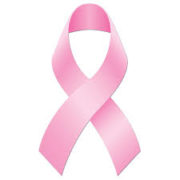Breast Cancer
 Get Them Covered
Get Them Covered
October marked Breast Cancer awareness month around the world. Breast cancer is the most commonly diagnosed cancer among women in Australia, with 14,940 women predicted to be diagnosed with the disease in 2013, rising to 17,210 women in 2020. That’s an average of 330 women a week.
In the last five years, breast cancer has made up 50% of all of trauma insurance claims paid to women. And a high prevalence isn’t just observed for trauma. Breast cancer accounted for 20% of income protection claims, 18% of TPD claims and 15% of life and terminal illness claims.
Increasing age is one of the strongest risk factors for developing breast cancer, but it doesn’t just affect older people. Two out of three cases will be diagnosed in women aged 40-69, key ages for insurance coverage.
How can insurance help?
Trauma cover can provide a lump sum payment in the event of diagnosis. You can discuss with us how much cover is needed and you may include funds for treatment, supplementary income, reducing debt or even for a spouse to take time off work. Given the high chance of claim, trauma is the most expensive of the lump sum covers available.
Trauma insurance can cover breast cancer diagnosed at any stage. Definitions have evolved in the last few years to provide full claims to most women, even if they are diagnosed early, referred to as carcinoma in situ. Modern definitions should cover women who have a lumpectomy and follow up treatment like radiation or chemotherapy, rather than requiring more dramatic treatment to satisfy a claim at an early stage.
Keeping life going
Of course not all women will cease work. Australian women have an 89% chance of surviving more than five years after diagnosis. Certain income protection definitions and benefits can help provide support.
Cancer patients are one of the most likely groups of claimants to continue working through treatment. Finding a policy with a 10 hour definition will give them the flexibility to work up to 10 hours a week while undergoing treatment, without financial penalty. You may also look for a policy with a counselling benefit. While grief support is common on life cover, under income protection, this benefit gives access to support and comfort during a difficult and stressful time.
There are lots of considerations when choosing a policy for cancer coverage and sometimes it is impossible to be across all the benefits.
To find out how trauma insurance can help you, contact our office today!
1,3, 4. www.nbcf.org.au/Research/About-Breast-Cancer.aspx
2. Claims paid between 2009 and August 2013



